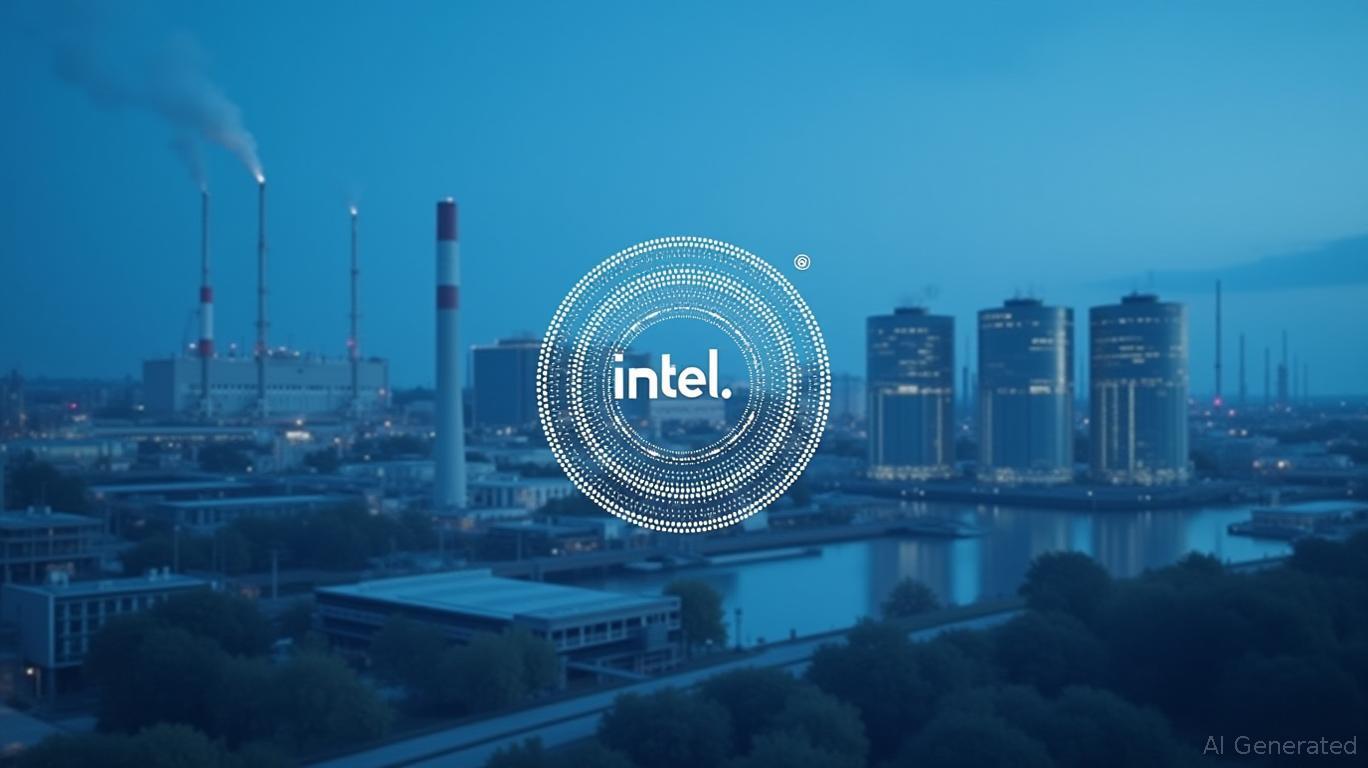Intel's Layoffs: A Necessary Reset or a Last Gasp?
The semiconductor industry is in a race against time, and Intel—once a titan—is scrambling to reclaim its crown. On April 24, 2025, the company confirmed plans to cut up to 20% of its workforce, part of CEO Lip-Bu Tan's aggressive restructuring to streamline operations and focus on AI and advanced manufacturing. While the layoffs sparked a brief stock surge, the market's subsequent skepticism raises critical questions: Are these cuts a sign of long-term viability, or a desperate bid to survive? And does the current valuation present a buying opportunity—or a trap?

The Layoffs: A Strategic Shift or Desperation?
Intel's layoffs, targeting middle management and bureaucratic layers, aim to slash costs and accelerate decision-making. The move follows $15 billion in losses over two years and a 64% stock decline since 2020. The immediate catalyst for the cuts? Missed revenue targets and a $2.3 billion operating loss in its foundry division.
The stock initially reacted positively, rising 5% on April 23, 2025, ahead of the announcement. But the rally collapsed after Q1 earnings revealed weak guidance: Q2 revenue projected at $11.2–12.4 billion, far below analysts' expectations. shows a volatile trajectory, with the stock trading at $20.25 as of June 6—a 38% drop over 12 months.
Why the Market Is Skeptical
Investors are right to be cautious. While layoffs reduce expenses, they risk destabilizing a workforce critical to Intel's complex operations. The 18A manufacturing node, slated for late 2025, and Panther Lake processors are key to recovery, but delays could be catastrophic. Competitors like NVIDIA and TSMC are already leapfrogging
in AI and foundry markets, respectively.Tan's strategy hinges on two pillars:
1. Cost Discipline: Cutting operating expenses to $17 billion in 2025 and reducing capital spending.
2. Tech Leapfrogging: The 18A node (30% denser than prior tech) and Panther Lake CPUs, which promise 1.9x AI performance gains over predecessors.
Valuation: Bargain or Bubble?
Intel's stock trades at a forward P/E of 21 and a price-to-book ratio of 0.83—well below its five-year average. Analysts estimate an intrinsic value of $36 per share via discounted cash flow models, implying a 78% upside. Yet risks loom large:
Bull Case:
- The 18A node and Panther Lake deliver on performance claims, attracting hyperscalers.
- Foundry partnerships with Microsoft and AWS gain traction, boosting Intel Foundry Services' revenue.
- CHIPS Act grants and geopolitical tailwinds support U.S. manufacturing dominance.
Bear Case:
- Execution missteps delay 18A/Panther Lake launches.
- PC demand remains weak, crimping CCG profits.
- Competitors (NVIDIA, AMD, TSMC) widen their lead in AI and manufacturing.
Investment Takeaway: A High-Risk, High-Reward Gamble
Intel's stock is a contrarian play for investors with a multiyear horizon and tolerance for volatility. The undervalued metrics and strategic pivot make it compelling—but only if Tan's restructuring succeeds.
Buy Signal:
- A sustained breakout above $25, signaling renewed investor confidence.
- Positive catalysts: 18A risk production by Q3 2025, Panther Lake benchmarks beating rivals, or a major cloud provider adopting Intel's AI chips.
Historically, however, such a strategy has not fared well. A backtest of buying Intel on earnings announcement dates when results beat estimates and holding for 30 days from 2020 to June 2025 revealed a CAGR of just 0.82%, with a maximum drawdown of -37.75%, underscoring the risks involved.
Sell Signal:
- Further misses on revenue/earnings guidance.
- Loss of key foundry customers to TSMC or Samsung.
- CEO Tan's departure or internal turmoil.
Final Verdict
Intel's layoffs are a necessary step, but survival hinges on execution. The stock's current price reflects deep pessimism, but the path to recovery is fraught with hurdles. For bulls, this is a "double-or-nothing" bet on Intel's ability to reinvent itself. For most, a wait-and-see approach is prudent—until the 18A node proves it can power a comeback.
Investing in Intel requires a bet on both its technology and its leadership. The jury is still out.

Comments
No comments yet